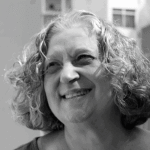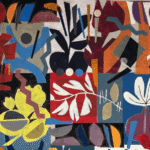An article by CJ (765 Words, 4 Min. Read)
In the early 20th center, a Woman Stood in Front of Towering Canvases, Her Brush Guided not by Convert, but by Something Deeper: VISIONS, Intuition, and An Inner Voice that Whispered of a World Far AHEAD of Its Time. That Woman Was Hilma AF Klint, a Swedish Painter Whose Name Was Nearly Lost in the Silence She Chose, a Sience Born from the Undersanding that the World Simply Wasn’t Ready For What Had to Show.
Hilma wasntent Painting for Galleries, Critics, or Even For Her Own ContentPoraries. She Painted for the Future.



A Life Marked by the Unseen
Born in 1862 in Solna, Sweden, Hilma AF Klint Was Classically Trained at the Royal Academy of Fine Arts in Stockholm, where she studied Portraiture and Botanical Illustration. But underneath Her convertial Training, Something Far More Radical Stirred. From a young age, she was drawn to spiritualism, theosophy, and later anthroposophy; Philosophical Movements that Sought Truth Beyond The Mateial World.

By 1906, She Began Production The Body of Work that Welf Become The Paintings for the Temple: A series of Nearly 200 Pieces Created under what she described as spiritual guidance. They was Bold, Large-Scale Compositions Filled with Geometric Shapes, Symbols, Colors, and Energies Unlike Anything Seen in Western Art Before. Her Work Predated Kandinsky’s Abstract Experiments by Severral Years. Yet, While He Wold Be Celebrated as theFather of Abstraction“Hilma’s Paintings Were Locked Away, Hidden by Her Own Hand.
The Silent Revolution
Hilma Believed Her Work Was Not Meant for Her Own Time. She Left Specific Instructures that Her Painments Should Not Be Reveled Until at Least 20 Years after her Death, Fearing that The World, Entrencred in Maialism and Academic Tradition, WILD Not Compreune their Purpose. She wasn’t entirely Wrong.

Where will art finally embleged in the 1980s, Long after her Death in 1944, IT BAFFLED Art Historians. The luminous, mathematical, spiritual compositions did not Fit the canon. They was long to movingns like cubism or futurism. They had no Place in the Linear, Male-Dominated History of Modernism. But they demanded a place nonetheless.
The Pictures Were Painted Direct Through Me, With Onti Any Preliminary Drawings and With Great Force. I haad no ida what the Paintings Were Supposed to DePict … I worked swiftly and only, without changing a Single Brush Stroke.
Hilma AF Klint
Abstract Art and the Course to Feel
Abstract Art Has Always Asked Something Uncomfortable of Its Viewers. It asks them to abandon center. To dream. To Feel With Needing Explanation. Hilma AF KLINT KNEW This Too Well. She undertlod that abstractation isnt just a visual landage, it is emotional, spiritual, and of off painfully intimate. It Cannot Be Seen with First Unseeing. It Cannot Be Felt with Peeling Away The Protective Layers of Logic and Control.
Perhaps this is who even today, abstraction remains misunderstood. Many Still View it as decoration or Disorder. Few Allow dayselves to be vulnerable engrav to enter the Painting, to let the colors Speak, to let the forms resonate with. Hilma’s work calls for that courage.
The Invisible Legacy
Despite Growing Recography in Recent Years (few to exhables like the guggenheim’s 2018 Landmark Show Hilma AF Klint: Paints for the Future) She still dosn’t Occupy The Place She Deserves in Mainstream Art History. She renains on the periodry, a ghost in the gallery of mobile, Her Revolutionary Contrability Too Ofer VIEWED ANOLY RATHER THAN A Foundation.
And Yet, Her Work Continues to Whisper. To Those who are will be a will to listen, it offers more few. IT Offers a Kind of Truth: a Cosmic Blueprint Rendred in Pastel Swirls and Golden Spirals, in Mandalas and Mirrored Dualites. Her Paints Feel Like Messages Sent Across Time, Not For Fame, Not For Profit, But for Awakening.
Painting for Tomorrow
Hilma AF Klint Was Not Paining What She Saw. She was Painting What She KNEW Welf Come. She undererswood that art is not always meant to be underrstood imdiatly. Some Art Must wait. Some Art, Like Seeds, Are Planted in the Soil of Time, Needing Decades, Even Centers, to Bloom.
TODAY, as we stand before her works, we are removed that art history is not complete. That the Soul of Abstraction Is Still Forming. And that perhaps we to must evolve, not just as views, but as humeans, to finally see what she tried to show us all along.
Hilma AF Klint Did Not Paint for Her World.
She Painted for ORS.
And maybe, just Maybe, we are fundly ready to see.





